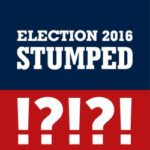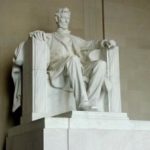This deliberation has students view C-SPAN video clips to learn about the history and Constitutional background of the Electoral College. Students will also explore arguments for and against reforming the Electoral College. Using this information, students will develop and argue their position on the question: Should the Electoral College Be Reformed?
Flaws of the Electoral College System
In this activity, students will trace the history of the Electoral College through analysis of primary source documents from the elections of 1789, 1800, 1824, and 1988 to identify four flaws with the system. An examination of proposed and implemented reforms, including the 12th Amendment, will engage students in a discussion of modifying or abolishing the Electoral College.
The Electoral College
Today, the American people vote for president and vice president on Election Day. But, technically speaking, these votes don’t directly determine the outcome of the election. These popular votes determine which electors will be appointed to the Electoral College, which is made up of 538 electors drawn from the states and the District of Columbia. Each state is granted a different number of electoral votes based on the size of its congressional delegation. The electors meet after the general election to cast their votes for president and vice president.
The Electoral College Process
In this activity, students will learn the steps in the Electoral College process, from Election Day to Inauguration Day. They will analyze historical primary sources from various Presidential elections, each representing a different step in the process, and arrange them in the correct sequence.
Deliberation Materials: Should the Electoral College Be Abolished?
Should the Electoral College be abolished? This activity includes a deliberation reading and glossary, as well as accompanying handouts to give students additional information on the topic and to guide them through the deliberation process from planning to reflection. Deliberation teaches people how to discuss controversial issues by carefully considering multiple perspectives and searching for consensus. In preparation for deliberations, all participants read common, balanced background information on the issue. During the discourse, they offer arguments for each position on a contested public issue, first drawing from the text and then bringing in their own experiences.
Election of 1800
In this activity, students will analyze the Electoral College tally for the presidential election of 1800 between John Adams and Thomas Jefferson.
Constitutional Index – Electoral College Clause
The Constitutional Index breaks down the U.S. Constitution by Section, Amendment, and Clause and contains broader topics and themes. These are used to cross-reference Library resources in an effort to annotate constitutional history.
Constitutional Index – Amendment 12 Electoral College Alteration Clause
The Constitutional Index breaks down the U.S. Constitution by Section, Amendment, and Clause and contains broader topics and themes. These are used to cross-reference Library resources in an effort to annotate constitutional history.
Is the System Fair?

Throughout U.S. history, Americans have silently stewed and actively protested that presidential elections are unfair and fixed against them. Do they have a point? In this lesson, students will understand why people are critical of the political process. They will discuss the topic: Do all voters have an equal voice in American democracy? Registration at NewseumED is required to view this resource.
